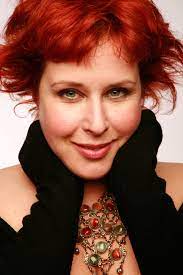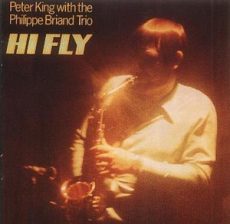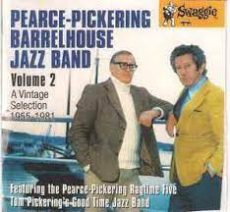
Daily Dose Of Jazz…
Sir John Phillip William Dankworth was born on September 20, 1927 in Woodford, Essex, England. He grew up within a family of musicians and attended Selwyn Boys’ Junior School and later Sir George Monoux Grammar School. Prompted by hearing a Benny Goodman Quartet album at 16, before settling on the clarinet he took violin and piano lessons. Soon afterwards he was inspired by Charlie Parker and learned to play the alto saxophone.
Beginning his career on the British jazz scene after studying at London’s Royal Academy of Music and then national service in the Royal Air Force, during which he played alto sax and clarinet for RAF Music Services. By 1947 he was working on the Queen Mary in Bobby Kevin’s band, and in London with Les Ayling. Through the rest of the decade he performed with Tito Burns, with Charlie Parker at the Paris Jazz Festival, and a tour of Sweden with Sidney Bechet. In 1949, Johnny was voted Musician of the Year.
The Fifties saw him forming a small group, the Dankworth Seven, as a vehicle to showcase his writing as well as several young players, Jimmy Deuchar, Eddie Harvey, Don Rendell, Bill Le Sage, Eric Dawson, Tony Kinsey and Frank Holder. also sang and recorded with this ensemble. Forming his big band in ‘53 and Cleo Laine was now a regular voice on appearances and recordings.
The band came to the States and performed at Newport, Birdland had Louis Armstrong sit in for a set and shared several stages with the Duke Ellington Orchestra. In 1959, John became chair of the Stars Campaign for Inter-Racial Friendship, set up to combat the fascist White Defence League.
The following decades saw him working and recording with numerous American and British jazz musicians, began composing for film and television, and received commissions all while performing live and on the radio.
As an educator his enthusiasm for jazz education led him to run for many years the Allmusic summer schools at the Stables in Wavendon and from 1984 to ‘86 he was a professor of music at Gresham College in London, where he gave free public lectures.
He was awarded an Honorary Doctorate of Music from Berklee College of Music, was made a Knight Bachelor in the 2006 New Year’s Honours List, and was made a Commander of the British Empire (CBE). In 2009 he fell ill and while he had to cancel several concerts he made one last appearance in December.
Saxophonist, clarinetist, composer, educator John Dankworth, who along with his wife Dame Cleo were one of a few couples to hold British titles, transitioned on February 6, 2010 at the age of 82, on the afternoon before a show celebrating the 40th anniversary of the foundation of The Stables.
Confer a dose of a Woodford saxophonist to those seeking a greater insight about the musicians around the world who are members of the pantheon of jazz…
More Posts: bandleader,clarinet,composer,educator,history,instrumental,jazz,music,music director,saxophone

DE ANDRÉ: I SAW NINA FLY
If there was still a need to say or sing something that has not yet been said or sung, here is a tribute to the music and words of one of the greatest poets of the 20th century, Fabrizio de Andre’. The four musicians, important exponents of the Italian jazz and world scene, meet to interpret with emotion and refinement some of the most beautiful songs by Fabrizio de Andrè, from the best known ones (bocca di rosa, the song of marinella, song of lost love, creuza de ma, a judge) to those left a little more in the shadows (prayer in January, khorakhanè, I saw nina fly), using different and only apparently distant languages such as jazz.
Raffaela Siniscalchi • Vocals
Gabriele Coen • Clarinet
Stefano Saletti • Buzuki oud – Guitar
Mario Rivera • Bass
More Posts: adventure,clarinet,club,genius,guitar,jazz,music,preserving,restaurant,travel,vocal

Daily Dose Of Jazz…
Jimmy Strong was born August 29, 1906 in Chicago, Illinois. As a teenage clarinetist he performed in Lottie Hightower’s Nighthawks. Around 1925, he did a national tour with a traveling revue and stayed in California for a time, freelancing with several groups.
Returning to Chicago he joined Carroll Dickerson’s orchestra, where he worked with Louis Armstrong, appearing on Armstrong’s Hot Fives recordings. In 1928, he also worked briefly with Clifford King. The 1930s saw him playing with Cassino Simpson, Zinky Cohn, and Jimmie Noone, as well as his own bands.
Around 1940 relocating to Jersey City, New Jersey he performed with local bands until his death. Clarinetist and tenor saxophonist Jimmy Strong transitioned in April 1977.
More Posts: clarinet,history,instrumental,jazz,music,saxophone

Daily Dose Of Jazz…
Peter John King was born on August 11, 1940 in Kingston upon Thames, Surrey, England. He took up the clarinet and saxophone as a teenager, entirely self-taught. His first public appearances were in 1957, playing alto in a trad jazz group at the Swan Public House in a group organized by trumpeter Alan Rosewell. After the performance he chose to be a professional musician. He came under the strong musical influence of Charlie Parker developing a bebop style inspired by Parker.
In 1959, at the age of 19, he was booked by Ronnie Scott to perform at the opening of Scott’s club in Gerrard Street, London, England. In the same year, he received the Melody Maker New Star award. He worked with Johnny Dankworth’s orchestra from 1960 to 1961, and went on to work with the big bands of Maynard Ferguson, Tubby Hayes, Harry South, and Stan Tracey, the Brussels Big Band, and the Ray Charles band on a European tour.
He played in small groups with musicians such as Philly Joe Jones, Zoot Sims, Al Cohn, Red Rodney, Hampton Hawes, Nat Adderley, Al Haig, John Burch, Bill Watrous, and Dick Morrissey, Tony Kinsey, Bill Le Sage, Jimmy Witherspoon, Joe Williams, Jon Hendricks, and Anita O’Day. His musical curiosity led him to associate with freer idioms in John Stevens’ ‘Freebop’ group in the 1980s. He appeared on the soundtrack of the 1969 film The Italian Job. He was a member of the Charlie Watts Tentet.
From the early 1990s, his style matured and flourished as an improviser and a composer. He found ways to combine jazz and classical techniques without diluting either and he recorded the results on his albums Tamburello, Lush Life and Janus with the Lyric String Quartet.
He won the BBC ‘Musician of the Year’ award, appeared in the documentary film, No One But Me, discussing jazz vocalist Annie Ross and appeared in the movies Blue Ice and The Talented Mr. Ripley. His autobiography Flying High was widely praised for its candour and honesty about his musical career and personal life, his international associations in the jazz world, and the many years in which he battled addiction. Saxophonist, clarinetist and composer Peter King transitioned on August 23, 2020 in Putney, South London, England at 80.

Daily Dose Of Jazz…
Thomas Mansergh Pickering was born on August 8. 1921 in Burra, South Australia, Australia. When the family moved to Australia’s island state of Tasmania from Burra in the mid-l930s and settled in the house next door to where Ian Pearce lived, the stage was set for the beginning of what was to become a significant part of Tasmania’s jazz history.
In his mid teens, he and Ian discovered British dance bands and over timethey embraced Benny Goodman, Louis Armstrong and the Swing Era musicians. Pee Wee Russell and Bud Freeman came later. At sixteen Tom received his first clarinet, doubling on saxophone and with his brother Cedri on drums, friend Ian playing cornet, pianist Rex Withers-Green, they gave birth to The Barrelhouse Four. He started playing in local bands and the four hit at local jam sessions. With the oncoming of WWII in 1939 they went their separate ways, reuniting in 1946 to record their first commercial pressing.
Pickering played traditional jazz in various parts of Australia during the late 30s and 40s. He continued working throughout succeeding decades, continuing his preference for older styles but also playing effective tenor saxophone in mainstream settings. His playing and recording career continued apace into the 80s, and his contribution to the musical life of his country has been rewarded with a number of honours.
Pickering went on to form his Good Time Jazz Band, which found success until the rising popularity of rock music led to the band’s eventual break up. A trio followed untilhe and Ian put together the Pearce- Pickering Ragtime Five. They had two very long and successful runs at the Tattersall’s Bar and Bistro, and then at Wrest Point Casino.
Ill-health led to Tom’s eventual retirement from music and the end of his playing career. Having qualified as a librarian in 1948, he would go on to work in the State Library of Tasmania, then became Parliamentary Librarian in 1974. He was made a member of the Order of Australia (AM), won the Australian Jazz Convention Composition Competition twice, and received the Satchmo Award.
Clarinetist Tom Pickering transitioned in Hobart, Tasmania on October 26, 2001.
More Posts: bandleader,clarinet,history,instrumental,jazz,music,saxophone


